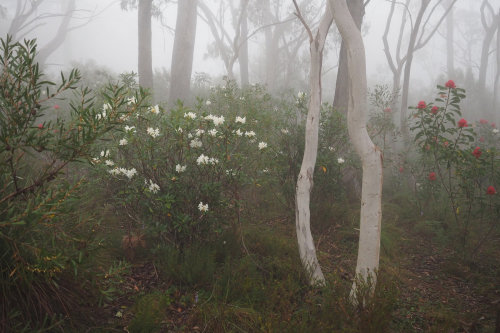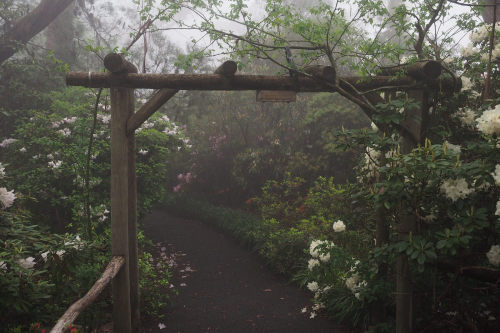Brian Self Portrait

Brian self portrait
Apparently Brian drew it in Japanese news show (x)
More Posts from Enbylvania65000 and Others
The Late Rodentocene: 20 million years post-establishment

Riffing the Reefs: Marine Life of the Late Rodentocene
HP-02017 is easily thought of as a planet of hamsters, but other life also thrives. The ecosystem's accessory organisms released onto the planet have since formed ecosystems of their own, equally players in the game of life as the hamsters are, and nowhere is this more evident than the shallow seas of the Late Rodentocene.
At first glance, the reefs that grow in the sunlit shallows of the planet's seas look incredibly like those of our own. Forests of algae and kelp grow in the rocks close to shore, as well as corals of all shapes and sizes that sprout in great masses, forming reefs that serve as a shelter for small, colorful sea creatures that thrive in abundance. Yet despite its initial familiarity, the marine biomes of HP-02017 are anything but: its similarities are superficial, and its creatures are something else entirely.

Only a choice few organisms were seeded into the seas: small mollusks such as sea snails and bivalves, as well as sponges and corals, which at first were from but a small collection that have since diversified into a dazzling array. But with so few creatures, and so many empty niches, it didn't take long for the choice few colonists to explode into a diversity rivalling that of Earth's oceans.
Corals, which reproduced via free-swimming planktonic larvae, have filled the empty spaces of their relatives the cnidarians, with some forms becoming tentacled stinging sessile hunters akin to sea anemones, while other drifting larvae become neotenic, remaining in their mobile forms into adulthood and become the transparent, drifting mock jellies.
The humble sea snail has also seen an extreme explosion of diversity in the past 20 million years, spawning thousands of species that came to fill nearly every marine invertebrate niche imaginable. Some lost their shells, coming to resemble sea slugs, and many of which would develop bright body colors for display or as warning coloration, converging heavily on nudibranches present in Earth's oceans. Other snails, developing flattened bodies and a unique vascular system in their belly-foot, become heavily convergent on echinoderms, with some being long-bodied bottom feeders like sea cucumbers, others developing venomous spines akin to urchins, and one strange lineage, developing vaguely-arm-like protrusions on their foot and a radula adapted for feeding on bivalves, becoming a bizarre analogue of a starfish. Others become tentacled swimmers resembling shelled cephalopods: the notiluses.

But by far the most diverse and successful invertebrate clade in the planet's oceans are descendants of planktonic krill, which, in the absence of fish, exploded in diversity to fill as many aquatic niches as they can. Known as shrish, these peculiar crustaceans first emerge as shrimp-like swimmers that propelled themselves through the water with a paddling array of feathery swimming legs.
As they evolved even further, however, they began taking on peculiar niches as time went on. Bottom feeders such as the trilobug became broad and flat, filling roles akin to flatfish or crabs, and some of these bottom-dwellers secondarily re-evolved to become active swimmers, such as the filter-feeding shringray that defends itself with venomous barbs on its tail. Others became elongated, flexible centipede-like predators that hunted other shrish, lurking in caverns in coral much like moray eels in wait to ambush their prey, known as the shreels.
Some shreels would eventually develop a shorter and more streamlined body, and give rise to active swimmers that propelled themselves with undulating waves of their abdomen and tail. Becoming a more efficient means of propulsion with larger or faster species, these paddletailed shrish would eventually modify their rearmost swimming legs along with their tail fan into a caudal fluke of sorts, while their thoracic limbs became used for catching food or filtering particles from water. This lineage of paddletailed shrish would eventually bring about the biggest top predators of the Late Rodentocene seas, the shrarks. Using their barbed rostrums and spiked forelimbs as three grabbing "jaws", the shrarks reach lengths of almost a meter: rivalling the largest marine arthropods of Earth's history, the eurypterids of the Devonian era.
The reefs of the Late Rodentocene are a vast and diverse ecosystem that flourishes in strange new ways independently of the world of rodents above. Life in the ocean takes on unusual new forms in a biome not yet invaded by the hamsters -- at least for the time being.
▪▪▪▪▪▪▪▪▪


A topographical map of the UK built out of a LEGO in a vintage style. If you’d like this to become a real LEGO set, then add your support here.

a few days ago a coworker asked me to explain Hanukkah and I asked her if she knew what a menorah was. She said, “like the Northern Lights?”
I’m simultaneously haunted by and wild about this concept now. instead of aurora borealis, menorah borealis. menorah borealis
🗣️ PSA
if ur a pixel artist or u use instagram please be wary of this account @pixel___art__._



they’ve not only stolen pixel art from a LOT of artist (including myself and @waneella) but they’re claiming to be the artist behind the artwork. it’s just so wildly cringe lmfaooo but please block them so you don’t accidentally interact with this account, thank you!! 🖤



27 January: International Holocaust Remembrance Day
On this day we honour and remember the approximately 22 million innocent souls who fell victims to hate racism and prejudice crimes, nearly 7.5 million of which were slaughtered for being who they were.
6 million Jews (1.5 million of which were children)
1.5 million Romani
270 000 People with disabilities (be it physical or mental)
55 000 gay people (approximately)
14 million civilians, caught in the crossfire, famine and ugliness of war from all over Europe.
This day is an important reminder of what once was and what should never be again.
May their rest be more peaceful than their life and may their memory be a blessing.
Never Forget.


Campbell Gardens by trisharooni
I feel like maybe starting a blog again I want to write in depth posts about topics with full html support And I also want to talk politics in a public space without all the problems of talking politics on social media. Especially I want to keep my tumblr account mostly non-political.
Also first time posting in months Again. Or even checking tumblr. But this is my only social network now (stopped using twitter even before the fiascos with Musk) and I kind of miss having that. But I also find myself with a lack of anything to share. Life has been pretty boring in most non-political regards.
-
 masley liked this · 9 months ago
masley liked this · 9 months ago -
 queenofclogs liked this · 10 months ago
queenofclogs liked this · 10 months ago -
 epaily liked this · 1 year ago
epaily liked this · 1 year ago -
 stalkersnotallowed liked this · 1 year ago
stalkersnotallowed liked this · 1 year ago -
 wildhornypie13 liked this · 1 year ago
wildhornypie13 liked this · 1 year ago -
 melisa-may-taylor72 liked this · 1 year ago
melisa-may-taylor72 liked this · 1 year ago -
 ackreik liked this · 1 year ago
ackreik liked this · 1 year ago -
 it-me00 reblogged this · 1 year ago
it-me00 reblogged this · 1 year ago -
 maybe-a-reiner liked this · 1 year ago
maybe-a-reiner liked this · 1 year ago -
 luluv98 reblogged this · 1 year ago
luluv98 reblogged this · 1 year ago -
 iloveakindofmagic liked this · 1 year ago
iloveakindofmagic liked this · 1 year ago -
 idontknowhowthisworked reblogged this · 1 year ago
idontknowhowthisworked reblogged this · 1 year ago -
 riaaanna liked this · 1 year ago
riaaanna liked this · 1 year ago -
 drspacepoodle liked this · 1 year ago
drspacepoodle liked this · 1 year ago -
 lydiannode reblogged this · 1 year ago
lydiannode reblogged this · 1 year ago -
 alanangels liked this · 1 year ago
alanangels liked this · 1 year ago -
 foxmonkey liked this · 2 years ago
foxmonkey liked this · 2 years ago -
 abootfullofclogs reblogged this · 2 years ago
abootfullofclogs reblogged this · 2 years ago -
 idontknowhowthisworked reblogged this · 2 years ago
idontknowhowthisworked reblogged this · 2 years ago -
 queenfannic liked this · 2 years ago
queenfannic liked this · 2 years ago -
 queen-1964 liked this · 2 years ago
queen-1964 liked this · 2 years ago -
 plainxte reblogged this · 2 years ago
plainxte reblogged this · 2 years ago -
 lydiannode liked this · 2 years ago
lydiannode liked this · 2 years ago -
 parmoonlight reblogged this · 2 years ago
parmoonlight reblogged this · 2 years ago -
 parmoonlight liked this · 2 years ago
parmoonlight liked this · 2 years ago -
 carrrothead-vol2 reblogged this · 2 years ago
carrrothead-vol2 reblogged this · 2 years ago -
 wings-n-bees liked this · 2 years ago
wings-n-bees liked this · 2 years ago -
 mysticanni reblogged this · 2 years ago
mysticanni reblogged this · 2 years ago -
 plainxte liked this · 2 years ago
plainxte liked this · 2 years ago -
 stesichoreanpalinode reblogged this · 2 years ago
stesichoreanpalinode reblogged this · 2 years ago -
 stesichoreanpalinode liked this · 2 years ago
stesichoreanpalinode liked this · 2 years ago -
 marchofthekillerqueen reblogged this · 2 years ago
marchofthekillerqueen reblogged this · 2 years ago -
 theunlovedbabe reblogged this · 2 years ago
theunlovedbabe reblogged this · 2 years ago -
 akindofmagic-inmylife liked this · 2 years ago
akindofmagic-inmylife liked this · 2 years ago -
 ursananas liked this · 2 years ago
ursananas liked this · 2 years ago -
 alexlifesonofficial liked this · 2 years ago
alexlifesonofficial liked this · 2 years ago -
 emotionallydrainedtrash liked this · 3 years ago
emotionallydrainedtrash liked this · 3 years ago -
 freko555 liked this · 3 years ago
freko555 liked this · 3 years ago -
 maddie-02297 liked this · 3 years ago
maddie-02297 liked this · 3 years ago -
 eatingcornflakes liked this · 3 years ago
eatingcornflakes liked this · 3 years ago -
 roger-taylors-girl reblogged this · 3 years ago
roger-taylors-girl reblogged this · 3 years ago -
 roger-taylors-girl liked this · 3 years ago
roger-taylors-girl liked this · 3 years ago -
 freddiekisses reblogged this · 3 years ago
freddiekisses reblogged this · 3 years ago -
 ahyesmainblog liked this · 3 years ago
ahyesmainblog liked this · 3 years ago -
 rogersrightshoulder reblogged this · 3 years ago
rogersrightshoulder reblogged this · 3 years ago -
 daydreamhowell liked this · 3 years ago
daydreamhowell liked this · 3 years ago -
 joniroxanne liked this · 3 years ago
joniroxanne liked this · 3 years ago -
 lady-bug-6 liked this · 3 years ago
lady-bug-6 liked this · 3 years ago -
 annlizzita reblogged this · 3 years ago
annlizzita reblogged this · 3 years ago -
 annlizzita liked this · 3 years ago
annlizzita liked this · 3 years ago

